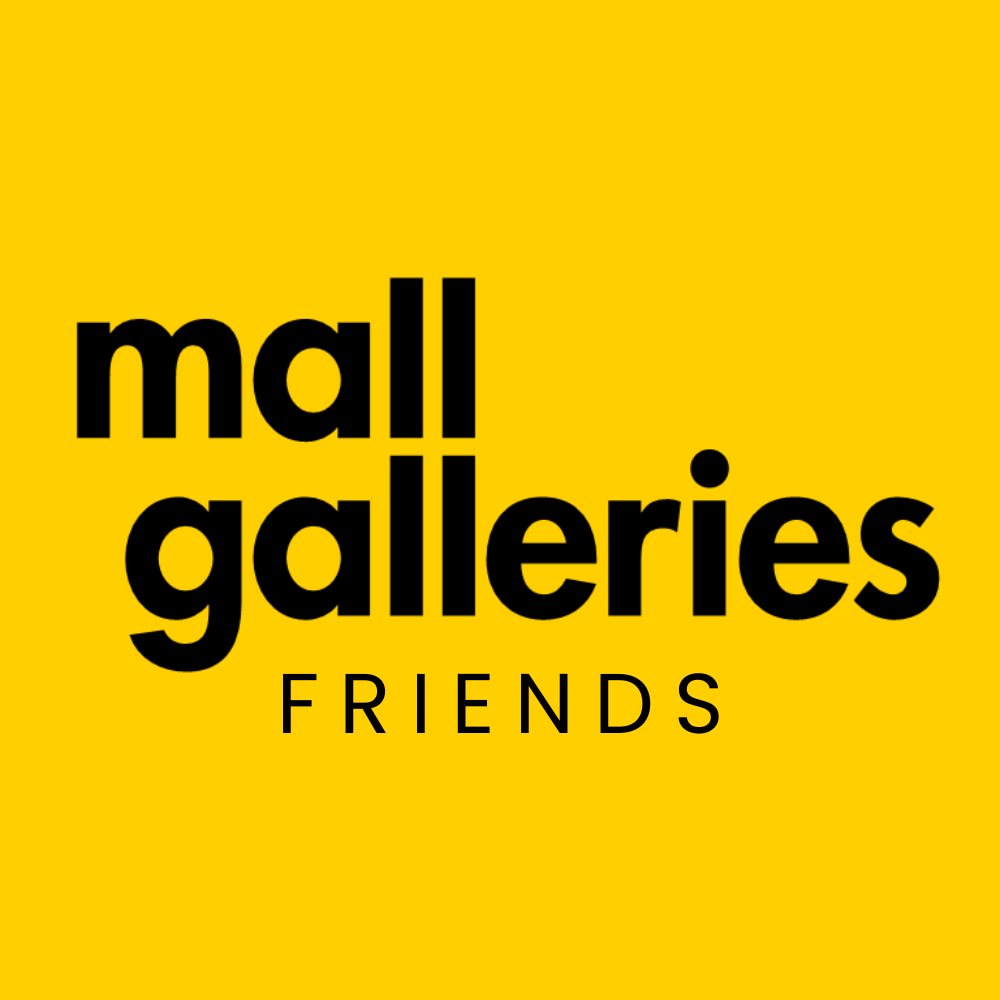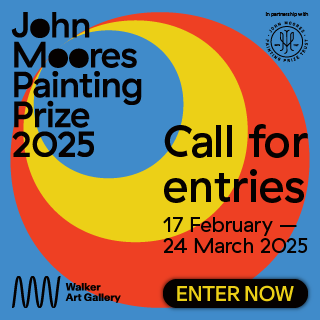Talking Art at Tate Modern
16-Oct-10
Talking Art at Tate Modern
Marina Abramovic
Interviewed by Iwona Blazwick
Arguably contemporary art’s most significant performance artist, the Belgrade-born, New York-based Marina Abramovic has produced provocative and compelling live work for almost 40 years. Her unrelenting focus on the body and the limits of the performer has resulted in some of the canon’s seminal works, from Rhythm 10, 1973, in which the artist duplicated a recording of herself stabbing knives between her fingers, through to her three-month endurance work The Artist is Present, 2010, which was part of her solo exhibition at New York MoMA – the museum’s largest ever exhibition of performance art. Abramovic won the Golden Lion at the Venice Biennale in 1997, has been included in Documenta three times, and has exhibited in numerous museums internationally. In 2012 she will open the Marina Abramovic Institute, dedicated to the preservation of performance art.
Permalink24-Apr-10
Talking Art at Tate Modern
Tatsuo Miyajima
Interviewed by Marcus Verhagen
Japanese artist Tatsuo Miyajima rose to prominence in the late 1980s with his distinctive use of glowing LED numerical counters, with later works seeing these counters attached to moving devices or embedded in natural materials, such as piles of coal or submerged underwater. Miyajima describes his practice as addressing humanist ideas within a Buddhist philosophy: ‘keep changing, connect with everything, continue forever’. He has work in the Tate Collection, has twice exhibited in the Venice Biennale and presented a solo show at London’s Lisson Gallery earlier this year.
Permalink20-Feb-10
Talking Art at Tate Modern
Kimsooja
Interviewed by Maxa Zoller
Born in South Korea, New York-based artist Kimsooja is renowned for her performative video works and sculptural installations. Meditating on the crossover between cultural, social and personal identity, her work has previously been selected for the Venice Biennale ? 2001, 2005 and 2007 ? as well as the Whitney Biennial and the Yokohama Triennial. She currently has a solo exhibition at the Baltic in Gateshead.
Permalink14-Nov-09
Talking Art at Tate Modern
Harun Farocki
Interviewed by Sophia Phoca
The highlight of Documenta 12 was Harun Farocki?s 12-screen video installation Deep Play, 2007, which analysed the football World Cup final from different perspectives. Born in the German-annexed Czechoslovakia and now living in Berlin, Farocki has produced over a hundred film and video works for art galleries, cinema and TV. He is also a lecturer and theorist, and for a decade from 1974 he was the editor of Filmkritik magazine.
Permalink8-Oct-09
Talking Art at Tate Modern
John Baldessari
Interviewed by Simon Patterson
John Baldessari was one of the founders of Conceptual Art in the 1960s and has gone on to become a giant of the West Coast art scene in the US, both as an artist and highly influential lecturer at CalArts. At this year?s Venice Biennale he was awarded the Golden Lion Lifetime Achievement Award. He has exhibited in major museums globally and this talk coincides with the launch of his major retrospective at Tate Modern.
Permalink6-Jun-09
Talking Art at Tate Modern
Pipilotti Rist
Interviewed by Patricia Bickers
Swiss artist Pipilotti Rist won the Premio 2000 prize at the 1997 Venice Biennale for her subversive video Ever is Over All in which a young woman strolls down a Zurich street casually smashing the windows of parked cars with a fake tropical flower. She has been included in four Venice Biennales and had solo exhibitions at MoMA New York and FACT, Liverpool.
Permalink9-May-09
Talking Art at Tate Modern
Anri Sala
Interviewed by Sally O?Reilly
The video artist interviewed by Sally O?Reilly.
Permalink7-Mar-09
Talking Art at Tate Modern
Lorna Simpson
Interviewed by Alison Green
New York-based African-American artist Lorna Simpson came to prominence in the 1980s with challenging work that dealt with issues surrounding race, gender and sex. Though deceptively simple and extremely elegant, her juxtapositions of text and image pack a powerful punch, as in Untitled (2 necklines) of 1989, in which the text between two circular photographs of necklines reads: ?ring, surround, lasso, noose, eye, areola, halo, cuffs, collar, loop?, ending with the phrase, ?feel the ground sliding from under you?.
Permalink6-Dec-08
Talking Art at Tate Modern
Christian Boltanski
Interviewed by Rikke Hansen
French artist Christian Boltanski thinks of himself as a painter but is best known for his photographic installations. A photographer who often re-photographs found images, including family snapshots, he associates photography with death and describes himself as a ?cadaver merchant?. For the inaugural Folkestone Biennial of 2008, Boltanski created a moving sound piece, Whispers, comprising readings from the private love letters of soldiers and their lovers from the First World War.
Permalink25-Oct-08
Talking Art at Tate Modern
Dennis Oppenheim
Interviewed by Lisa Le Feuvre
Dennis Oppenheim’s practice has taken in actions, performances, installations, sculptures, film, architecture and everything in between. Seminal early works include Cancelled Crop, 1969, a field was harvested in the form of an X, and Reading Position for Second Degree Burn, 1970, a photographic diptych of Oppenheim lying on Jones Beach in New York, one with an open book (titled Tactics) face down on his chest, and one without showing the void created after five hours exposed to the sun. In recent years he has returned to the object and created installations including the Garden for the Accused in New York.
Permalink14-Jun-08
Talking Art at Tate Modern
Susan Hiller
Interviewed by Richard Grayson
Susan Hiller is renowned for making works that investigate everyday phenomena that are often overlooked. Previous subjects have included UFO sightings (Witness, 2000), horror movies (Wild Talents, 1997), near-death experiences (Clinic, 2004), Punch and Judy shows (An Entertainment, 1990) and dreams (Dream Mapping, 1974). She uses sound, video, text and photography, often creating large-scale installations. She has been described as a feminist, a conceptualist and a para-conceptualist.
Permalink31-May-08
Talking Art at Tate Modern
Cornelia Parker
Interviewed by Lisa Le Feuvre
?My work is all about the potential of materials ? even when it looks like they?ve lost all possibilities.? In the course of making her work, Cornelia Parker has shot at objects, thrown them from cliffs, blown them up and rolled over them with a steam roller. Her sculptural processes have been described as ?mimicking cartoon deaths?. Parker?s work is both dramatic and delicate, powerful and intricate ? out of destruction she creates tragedy and beauty.
Permalink24-Apr-08
Talking Art at Tate Modern
Glenn Ligon
Interviewed by Patricia Bickers
I went to see, I went to see Logan?s Run,? right?
They had a movie of the future called Logan?s Run
There ain?t no niggers in it!
I said ?Well white folks ain?t planning for us to be here!?
[Text work by Glenn Ligon]
New York-based artist Glenn Ligon is renowned for works across a variety of media including sculpture, neons, drawing and painting that explore issues surrounding race, sexuality, identity, representation and language.
Permalink29-Mar-08
Talking Art at Tate Modern
Gustav Metzger
Interviewed by Andrew Wilson
Gustav Metzger, born 1926, is the renowned artist and political activist who developed the concept of Auto-Destructive Art and co-organised the Destruction in Art Symposium in London in 1966. Metzger was also involved in the Fluxus movement and famously declared an Art Strike from 1977 to 1980. Concerned with environmental issues in art already in the 1970s, many of his projects are now seen as astonishingly prescient. After a career spanning decades, he is now in greater demand than ever, generating new projects as for Münster Sculpture Projects 2007 or realising earlier ideas, as with Project Stockholm, originally conceived in 1972 for the UN Environmental Conference in Stockholm. Now produced for the Sharjah Biennale (2007), the huge installation consists of 120 cars that discharge their exhaust fumes into a plastic structure.
Permalink2-Feb-08
Talking Art at Tate Modern
Lawrence Weiner
Interviewed by John Slyce
In 1968 Lawrence Weiner formulated his famous ?Declaration of Intent? which became a manifesto of Conceptual Art:
- The artist may construct the piece.
- The piece may be fabricated.
- The piece need not be built. Each being equal and consistent with the intent of the artist the decision as to condition rests with the receiver upon the occasion of receivership.
After a prolific career of more than forty years, his art remains singularly relevant today. Following his highly acclaimed retrospective As far as the eye can see (Whitney Museum of American Art, New York), Lawrence Weiner discusses his work with art historian and critic John Slyce.
Permalink24-Nov-07
Talking Art at Tate Modern
Christian Marclay
Interviewed by Gilda Williams
Artist Christian Marclay is renowned for his collages of music, sculpture, film and image. Marclay?s best-known works include Recycled Records, 1980-86, collages of broken and reassembled vinyl record still playable on the turntable; the video Guitar Drag, 2000, which features an amplified Fender guitar attached to a rope being pulled behind a pick-up truck; Video Quartet, 2002, a five-screen montage of great and/or obscure musical moments and The Sounds of Christmas shown at Tate Modern in 2004. Marclay, who is now based in Britain, recently had a solo show at White Cube.
Permalink20-Oct-07
Talking Art at Tate Modern
Joep van Lieshout
Interviewed by Marcus Verhagen
In 2001 Atelier Van Lieshout realised AVL-Ville, a ?free state? in the port of Rotterdam, the biggest work of art by Atelier van Lieshout to date. This free state is a mix of art environment and sanctuary, full of well-known and new works by AVL, with the special attraction that everything is fully operational. Not art to simply look at, but to live with, to live in and to live by. In 2002 AVL has recently located its first AVL-Ville export product in Park Middelheim in Antwerp: the AVL Franchise Unit. One of the most recent projects of AVL is SlaveCity, an up-to-date concentration camp, a sinister disutopian project which is very rational, efficient and profitable. The inhabitants of the city work in vast patterns of seven hours; they work in the CallCenters and also labour to maintain the city. SlaveCity is the first ?zero energy? town of this size in the world and functions without imported mineral fuel or electricity.
Permalink29-Sep-07
Talking Art at Tate Modern
Martha Rosler
Interviewed by Iwona Blazwick
23-Jun-07
Talking Art at Tate Modern
Hans Haacke
Interviewed by Patricia Bickers
Hans Haacke, known for his incisive, unflinchingly political works exposing systems of power and influence both within and without the art world, gives his first interview in this country since his two major retrospectives in Germany earlier this year.
Permalink












